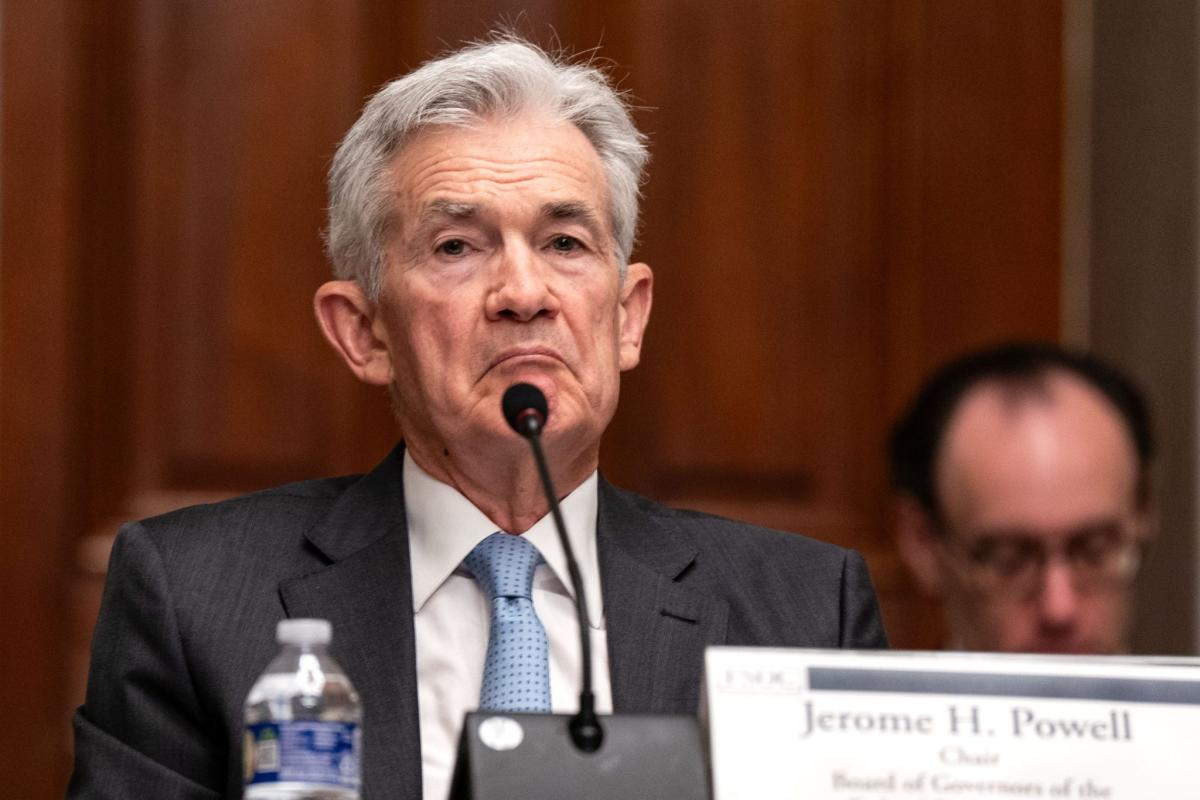The Federal Reserve has persuaded financial markets to create an easier environment, which paradoxically makes cutting rates a more difficult task for the central bank, a top economist said.
The Bloomberg US Financial Condition Index indicates that the availability and cost of credit in the money, bond and equity markets are significantly more favorable today than when the Fed started raising rates in March 2022, according to Torsten Sløk, chief economist of Apollo.
That’s due to the central bank’s about-face in November, when Chairman Jerome Powell indicated that inflation had cooled enough to halt rate hikes and consider when rate cuts could begin.
As it turned out, Wall Street misinterpreted the comments as if an easing was imminent and that as many as six cuts would take place in 2024, leading to a huge stock market rally.
In a blog post on Wednesday, Sløk estimated that the S&P 500 stock index has since added $9 trillion in market capitalization and compared this to the $19 trillion in consumer spending last year.
“In other words, in just a few months, the household sector has experienced a windfall equivalent to approximately 50% of last year’s consumer spending!” He wrote.
Meanwhile, the federal government has spent trillions of dollars on infrastructure, green energy initiatives and semiconductor manufacturing capacity.
As a result, the economy has remained strong as these fiscal stimulus measures continue to boost growth, while easier financial conditions offset Fed rate hikes, Sløk noted.
In fact, the economy was so strong earlier this year that inflation rates exceeded expectations and showed signs of reaccelerating. That forced Powell to warn that rates could remain high “as long as necessary” as inflation appeared to take longer to reach the Fed’s 2% target.
Still, he later acknowledged that further rate hikes were unlikely and reaffirmed that the Fed’s next move — whenever that is — is likely to be a rate cut.
And that is exactly the mistake Powell is making, according to Sløk.
“Looking ahead, with the stock market reaching new record highs and fiscal policy still supportive, expectations in markets should be that the economy will continue to accelerate in the coming quarters,” he wrote. “You can call this the Fed Cut Reflexivity Paradox: the more the Fed insists that the next step in interest rates is a cut, the more financial conditions will relax, making it harder for the Fed to cut.”
To be fair, GDP growth in the first quarter slowed compared to the fourth quarter, and has been revised down to 1.3% annualized from an earlier reading of 1.6%. The latest report also showed that the fiscal stimulus had a smaller effect.
But consumer spending on services remained strong, and more recent unemployment claims data showed the labor market continuing to hold up.
Meanwhile, minutes from the Fed’s latest policy meeting showed that the economy’s resilience in the face of interest rates at a 23-year high had prompted some officials to question whether all their tightening was putting enough pressure on growth . High interest rates “may have smaller impacts than in the past,” the minutes said.
This story originally appeared on Fortune.com
